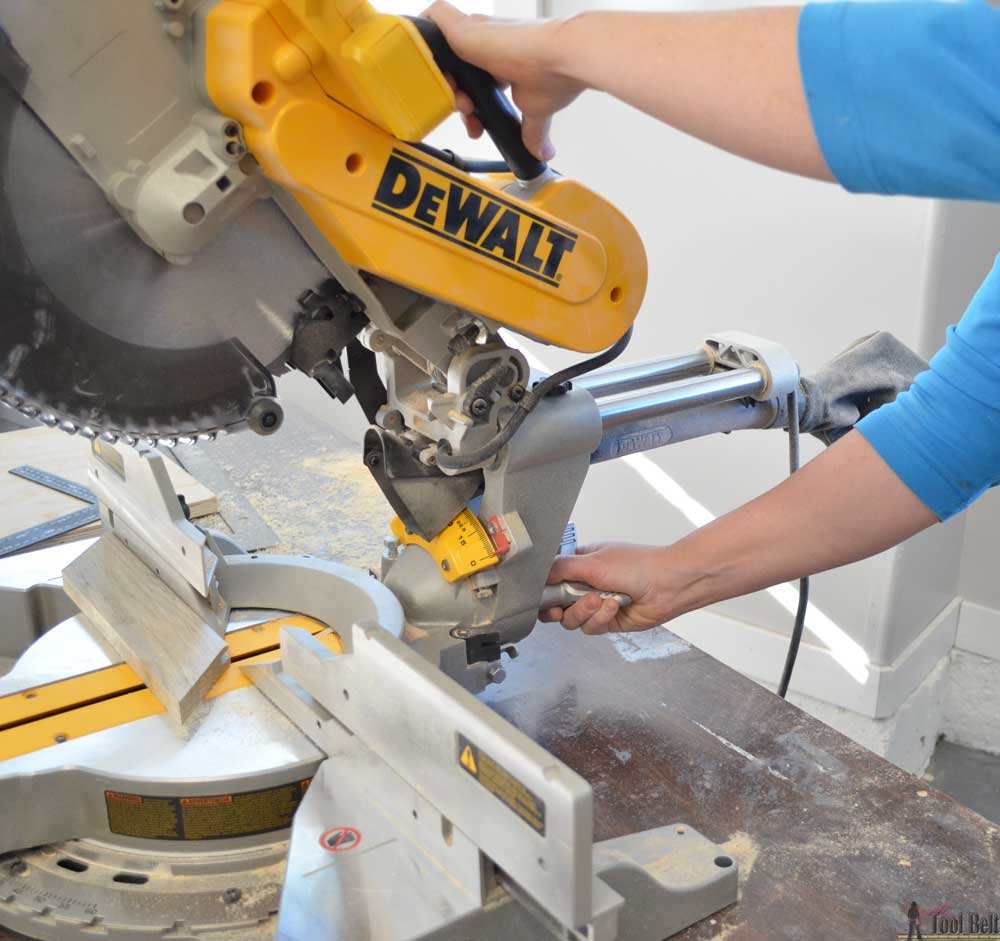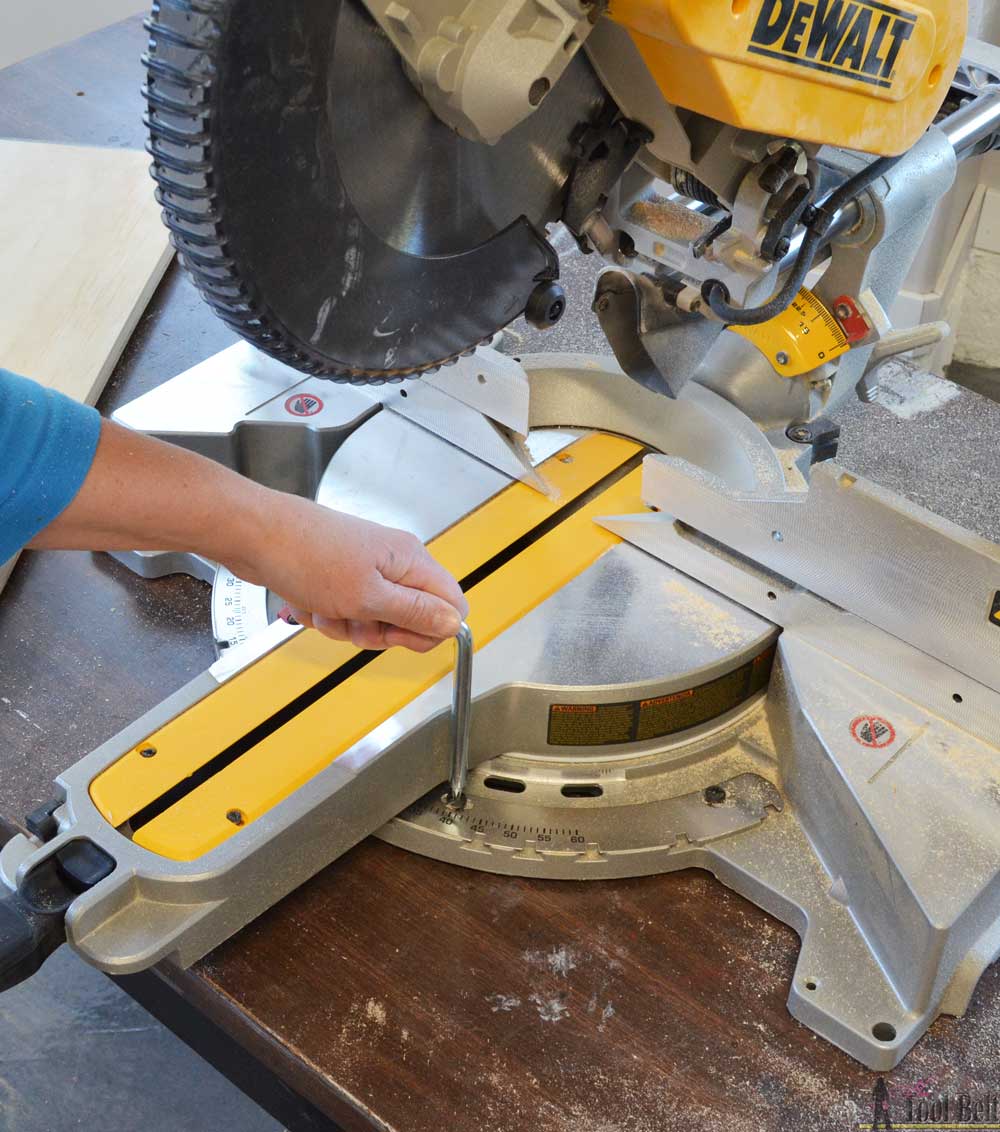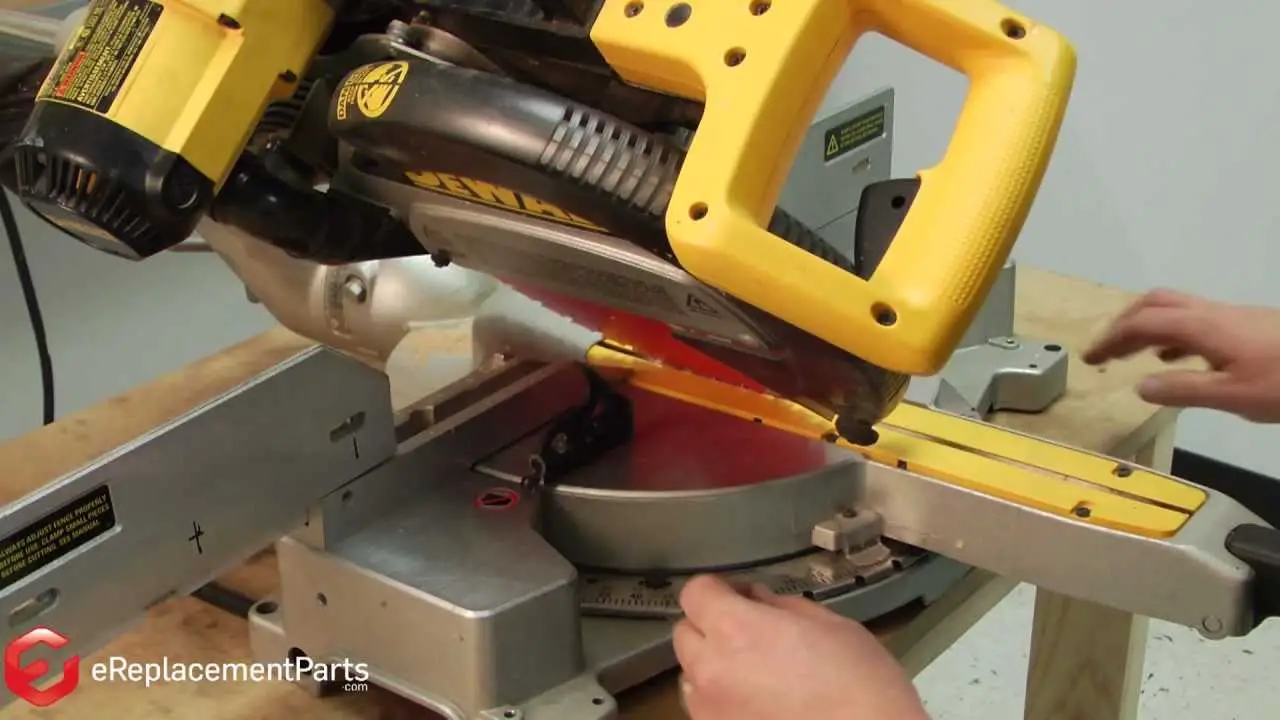How to fine-tune your Dewalt miter saw is a skill every woodworker should master for clean, accurate cuts. Whether you’re working on trim, framing, or detailed woodworking, proper adjustments are key to getting the most from your tool.
Start by loosening the bevel lock, adjusting the angle as needed, and then re-tightening the lock to hold it in place. Calibrating your Dewalt miter saw ensures the blade is aligned for straight, precise cuts every time.
Dewalt miter saws are known for their reliability and accuracy, but even the best tools need occasional adjustments. Learning how to fine-tune blade angles and bevel settings will improve your results and help extend the life of your saw.
In this guide, we’ll walk you through step-by-step instructions on how to adjust and calibrate your Dewalt miter saw like a pro — making sure your cuts are always spot-on.

Credit: m.youtube.com
Contents
Choosing The Right Dewalt Miter Saw
Considering Your Woodworking Projects
Before selecting a Dewalt miter saw, it’s crucial to consider the scope of your woodworking projects. Determine the type of cuts and angles you’ll frequently encounter in your work.
If you are focused on small-scale DIY projects, a compact and portable miter saw would suffice. On the other hand, larger professional projects might benefit from a heavy-duty, high-capacity miter saw for precision and efficiency.
Understanding Different Dewalt Miter Saw Models
Understanding the various Dewalt miter saw models is essential for choosing the right one. Dewalt offers a range of miter saws designed to accommodate different project needs.
The Dewalt DWS780 is a popular choice among professionals for its versatility and accurate cutting capabilities. Meanwhile, the Dewalt DW715 is ideal for homeowners and hobbyists due to its affordability and ease of use.

Credit: www.hertoolbelt.com
Setting Up Your Dewalt Miter Saw
Follow these steps to properly assemble your Dewalt miter saw:
- Unbox the saw and place it on a sturdy work surface.
- Attach the blade guard and insert the saw blade securely.
- Adjust the saw arm and lock it into place.
Make sure your Dewalt miter saw is accurately calibrated by following these simple checks:
- Verify that the angle indicators are aligned properly.
- Test the bevel and miter cuts on scrap wood for precision.
- Fine-tune the calibration using the adjustment screws as needed.
Understanding The Key Features
Learn the essential steps to adjust a Dewalt miter saw effectively for precise and accurate cutting. Understand the key features of the saw to optimize its performance and ensure seamless operation. Mastering these adjustments will enhance your woodworking projects and save you time and effort.
Get to Know the Key Features of Your Dewalt Miter Saw
Before you start adjusting your Dewalt miter saw, it’s important to understand the main parts and features that make it work so well. Once you’re familiar with these, making adjustments becomes much easier and safer. In this section, we’ll cover two of the most important things to know: the Blade Guard and Safety Features, and the Miter and Bevel Capacity.
Blade Guard and Safety Features
Safety should always come first when using any power tool, and Dewalt does a great job with this. One of the key safety parts is the blade guard. It covers the blade when you’re not using it, which helps protect you from accidental cuts. It moves smoothly and doesn’t get in the way when you’re making cuts.
Dewalt miter saws also come with smart safety features like an electronic brake that stops the blade quickly once you let go of the trigger. This can really help prevent injuries. Another handy feature is the blade guard retraction system, which gives you easier access to the blade for changing or adjusting it, while still keeping your hands safe.
Miter and Bevel Capacity
Now, let’s talk about the cutting angles. The miter capacity is how far the saw can turn left or right to make angled cuts—perfect for things like trim or picture frames. Most Dewalt miter saws can go from 45° to 60°, giving you a lot of flexibility.
Then there’s the bevel capacity, which tilts the saw blade to the left or right for angled cuts on the edge of the wood. This is great for projects like crown molding. Dewalt saws usually offer bevel angles from 45° to 48°, so you can handle all sorts of detailed cuts with confidence
Fine-tuning The Blade And Angles
When it comes to fine-tuning the blade and angles on your Dewalt Miter Saw, there are a few essential steps to ensure precision and accuracy in your cuts. Although it may seem intimidating at first, adjusting the blade and angles is a straightforward process that can greatly enhance your woodworking projects. In this section, we will guide you through the necessary steps to change the blade and calibrate the miter and bevel angles on your Dewalt Miter Saw.
Changing The Blade
If you find that your Dewalt Miter Saw’s blade is dull or no longer cuts smoothly, it’s time to replace it. Here’s how you can change the blade:
- Disconnect the saw from the power source to ensure safety.
- Using a wrench, carefully loosen the bolt that holds the blade in place.
- Remove the bolt and the outer washer.
- With caution, remove the old blade from the arbor.
- Position the new blade onto the arbor, aligning the blade’s teeth with the direction of the cut.
- Place the outer washer and the blade bolt back onto the arbor.
- Tighten the bolt using a wrench, making sure it is securely fastened.
- Ensure everything is properly aligned and tightened before reconnecting the saw to the power source.
Calibrating Miter And Bevel Angles
Accurate miter and bevel angles are crucial for achieving precise cuts on your Dewalt Miter Saw. Here’s how to calibrate these angles:
- Start by loosening the locking lever for the miter angle adjustment.
- Align the pointer on the miter scale with the desired angle measurement.
- Tighten the locking lever to secure the miter angle in place.
- For bevel angle adjustments, locate the bevel angle adjustment handle.
- Loosen the handle to unlock the bevel angle.
- Adjust the bevel scale indicator to the desired angle.
- Tighten the handle to lock the bevel angle in place.
- Double-check the accuracy of both the miter and bevel angles before proceeding with your cuts.
By following these steps to fine-tune the blade and angles on your Dewalt Miter Saw, you can ensure optimal performance and deliver precision cuts consistently. By regularly adjusting and calibrating your saw, you will be able to tackle various woodworking projects with confidence and achieve excellent results!
Maintenance And Troubleshooting
A well-maintained miter saw is crucial for accurate cuts and smooth operation. Regular maintenance and troubleshooting can help prolong the lifespan of your Dewalt miter saw while ensuring optimal performance. In this section, we will discuss the importance of cleaning and lubricating the saw and provide solutions for common issues you may encounter.
Cleaning And Lubricating The Saw
Regularly cleaning and lubricating your Dewalt miter saw is essential for keeping it in top shape. Here are a few steps to help you maintain your saw:
- Start by dusting off the saw to remove any debris or build-up. Wipe down the surfaces using a clean cloth or a soft brush.
- Use a mild cleaning solution or soapy water to clean the saw’s exterior. Avoid using harsh chemicals that may damage the finish.
- Pay special attention to the blade guard and the miter scale, as these areas can accumulate dust and hinder smooth operation. Clean these areas with a gentle brush or a damp cloth.
- Check the saw’s moving parts, such as the bevel and miter locks, for any signs of debris or dirt. Remove any obstructions and ensure proper functionality.
- Apply the appropriate lubricant to the saw’s pivot points, bearings, and sliding surfaces. Refer to your Dewalt miter saw’s manual for the recommended lubricant.
Common Issues And Solutions
Despite proper maintenance, you may encounter common issues with your Dewalt miter saw. Let’s take a look at some of these issues and the solutions:
| Issue | Solution |
|---|---|
| The blade wobbles during cuts. | Check if the blade is properly aligned and tightened. If not, make the necessary adjustments. If the problem persists, replace the blade. |
| The saw is not making accurate cuts. | Ensure that the miter gauge is calibrated correctly. Adjust it if necessary. Check if the fences are properly aligned with the blade. If not, realign them. |
| The motor is overheating. | Check for any blockages in the ventilation system and clean it if necessary. Let the saw cool down before using it again. If the problem continues, contact a professional for further inspection. |
| The blade is dull and not cutting smoothly. | Sharpen or replace the blade as needed. Ensure that the blade is correctly installed and tightened. |
By following these maintenance tips and troubleshooting solutions, you can ensure that your Dewalt miter saw remains in excellent condition, providing you with accurate cuts and reliable performance for years to come.
Enhancing Safety Measures
When it comes to using a Dewalt miter saw, safety should always be a top priority. By enhancing safety measures and following safe operating practices, you can prevent accidents and ensure a secure working environment. Let’s delve into some essential safety measures when using a Dewalt miter saw.
Using Personal Protective Equipment
Before operating the miter saw, it’s crucial to wear the necessary personal protective equipment (PPE) to safeguard yourself from potential hazards. Make sure to wear safety goggles to protect your eyes from debris and hearing protection to reduce the noise level generated during cutting.
Safe Operating Practices
Safe operating practices are imperative to minimize the risk of accidents when using a Dewalt miter saw. Always ensure that the work area is well-lit and clutter-free. Keep a firm grip on the workpiece and maintain a safe distance from the blade to avoid any mishaps.
Utilizing Accessories For Precision
Choosing The Right Saw Stand
When it comes to achieving precise cuts with a Dewalt miter saw, the right saw stand is crucial. Selecting a sturdy and adjustable stand can provide stability and support, enabling you to maximize the saw’s accuracy and efficiency. Look for stands with adjustable height and length extensions, ensuring compatibility with your miter saw model.
Adding Laser Guides Or Clamps
If you’re aiming for even greater precision, consider enhancing your Dewalt miter saw with laser guides or clamps. These accessories can aid in aligning your cuts precisely, making it easier to achieve accurate results. Laser guides project a clear cutting line onto your workpiece, while clamps securely hold the material in place, reducing the risk of movement during cutting.

Credit: www.hertoolbelt.com
Mastering Advanced Techniques
Compound miter joints require precise adjustments for seamless angles.
Bevel cuts add depth, and crown molding offers elegance to your projects.
Frequently Asked Questions
Why Does My Dewalt Miter Saw Not Cut Straight?
Your DeWalt miter saw may not cut straight due to a dull blade, misaligned fence, or improper technique. Check the blade for sharpness and alignment, and ensure the fence is straight. Also, use proper cutting techniques to avoid blade deflection.
How To Adjust a Miter Saw To a 45 Degree Angle?
To adjust a miter saw to a 45-degree angle: loosen the miter’s locking mechanism, align the saw to the 45-degree mark, and tighten the locking handle. Check the angle with a protractor or the saw’s built-in angle gauge for accuracy.
How To Change the Angle On a Dewalt Compound Miter Saw?
To change the angle on a DeWalt compound miter saw, follow these steps: 1. Loosen the bevel lock by turning it counterclockwise. 2. Adjust the bevel by tilting it left or right to the desired angle. 3 T after setting the bevel, tighten the bevel lock by turning it clockwise.
4. To set the miter angle, loosen the miter lock and adjust it to the desired angle. 5. Once the angle is set, tighten the miter lock to secure it in place.
How Do You Adjust The Angle On A Miter?
To adjust the angle on a miter, loosen the locking mechanism, tilt the saw blade to the desired angle, then tighten the lock to secure it in place.
Conclusion
Precision is key to mastering how to adjust your Dewalt miter saw. By following these steps, you can ensure your cuts are accurate every time. Understanding the intricacies of your saw will elevate your woodworking experience. Keep fine-tuning your skills and enjoy the benefits of precise miter saw adjustments.

